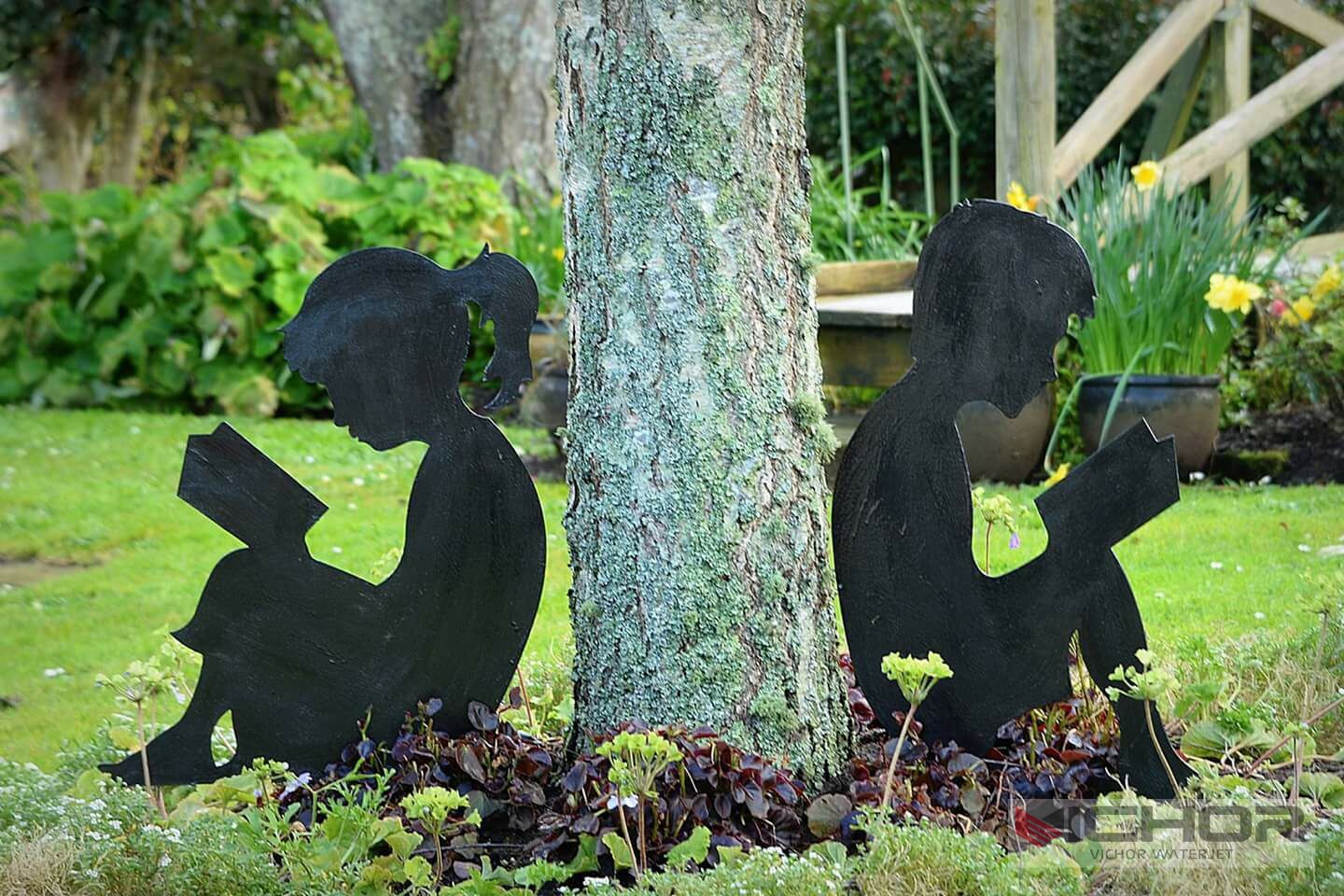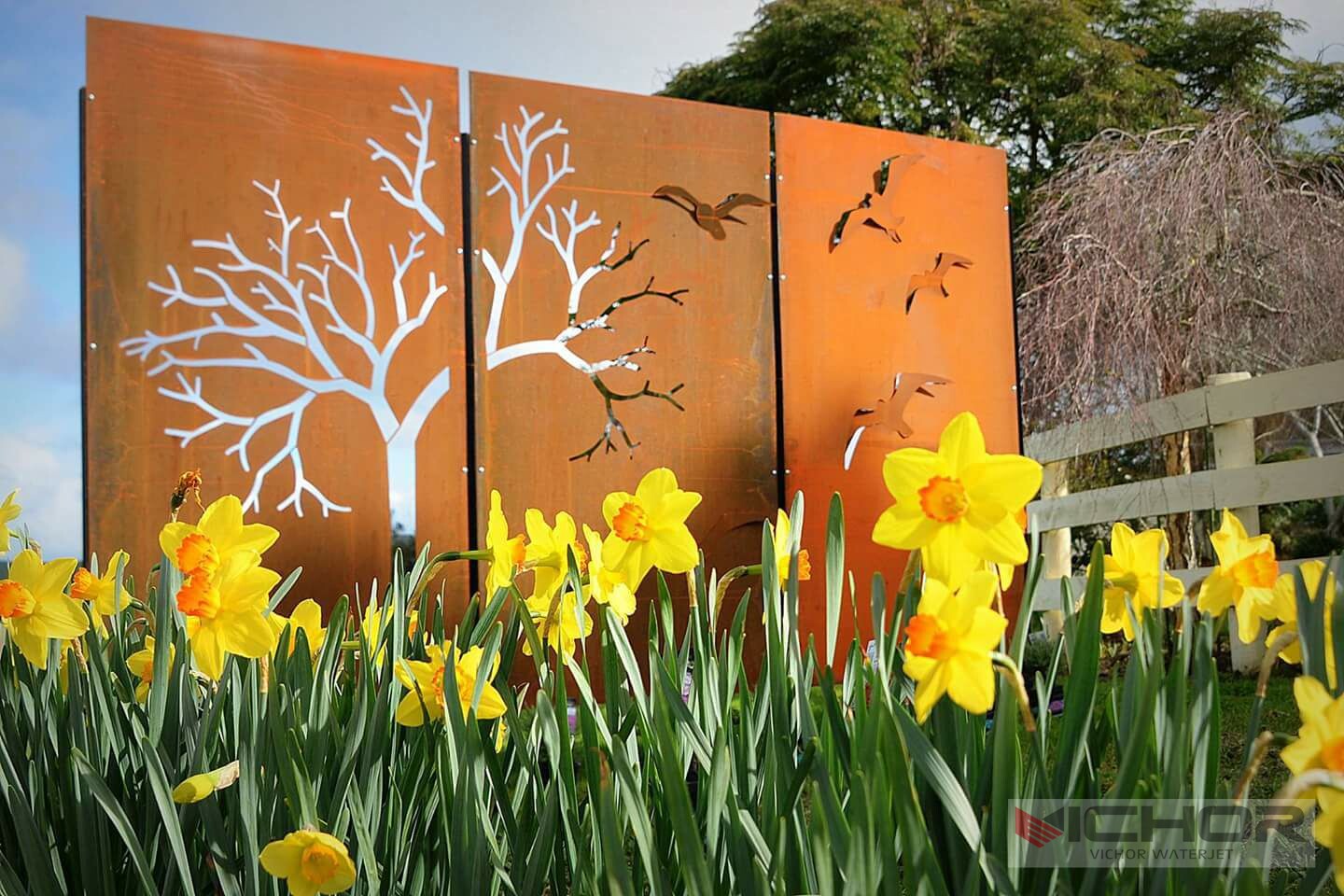
Waterjet Signs: Precision, Versatility & Impact for Modern Branding
In the competitive world of signage, standing out demands more than just a message – it demands craftsmanship, durability, and a unique aesthetic. Enter waterjet signs, a cutting-edge fabrication technique rapidly becoming the gold standard for businesses seeking unparalleled quality and impact. Utilizing an incredibly high-pressure stream of water, often mixed with abrasive garnet, waterjet cutting sculpts signs from virtually any material with extraordinary precision and finesse. This article delves deep into the world of waterjet signs, exploring seven key aspects that make them an exceptional choice for elevating your brand presence.
1. Unmatched Precision and Intricate Detail
The hallmark of waterjet signs is their breathtaking accuracy. Waterjet cutting operates with tolerances as tight as +/- 0.005 inches (0.127 mm). This level of precision is simply unattainable with traditional mechanical cutting methods like sawing or routing, or even with some thermal processes like plasma cutting which create a wider heat-affected zone (HAZ).
Complex Designs Made Easy: Intricate logos, fine lettering, delicate filigree, complex patterns, and even photographic reproductions are effortlessly achievable. The waterjet stream acts like a scalpel, faithfully following the most complex digital CAD/CAM paths without distortion or tool deflection.
Sharp Corners and Clean Edges: Unlike lasers that can create rounded corners or routers that might chip certain materials, waterjet cutting produces perfectly sharp inside and outside corners. This is crucial for detailed typography and geometric designs where crispness defines the sign’s quality.
No Burrs or Mechanical Stress: The non-contact, cold-cutting process means there’s no tool pressure on the material. This eliminates burrs commonly seen with machining and prevents the warping or stress-induced micro-cracking that can occur with heat-based methods. Secondary finishing for edge smoothing is often minimal or unnecessary.
This precision translates directly into waterjet signs that look meticulously crafted and professional, reflecting positively on your brand’s attention to detail.
2. Unrivaled Material Versatility: Cut (Almost) Anything
Perhaps the most significant advantage of waterjet signs is their astonishing material compatibility. Waterjet cutting isn’t fazed by material hardness, thickness, or composition in the way other methods are.
Metals Galore: From delicate foils and thin sheet metal (stainless steel, aluminum, brass, copper, bronze) to thick plates (up to 6 inches or more in some metals), waterjet handles them all. It cuts reflective materials like polished metals without issue – a common challenge for lasers.
Stone and Tile Elegance: Create stunning signs from natural stone (granite, marble, slate, travertine), engineered stone (quartz), ceramic, porcelain, and glass tile. The cold process prevents thermal shock and cracking, preserving the material’s natural beauty.
Glass Sophistication: Cut intricate shapes from thick architectural glass, tempered glass (before tempering), laminated glass, and even delicate stained glass with incredible control and smooth, chip-free edges.
Plastics and Composites: Acrylic (Plexiglas), PVC, polycarbonate, HDPE, G10, FRP, solid surface materials (like Corian), and rubber are all perfectly suited. The cold cut prevents melting, bubbling, or toxic fume release common with laser cutting plastics.
Wood and Specialty Materials: Thick hardwoods, MDF, laminates, foams, and even layered or textured materials pose no problem. Even materials like titanium or exotic alloys used in high-end applications are feasible.
This versatility empowers businesses to create truly unique waterjet signs that perfectly match their brand identity, environment (indoor or outdoor), and budget, using the ideal substrate for the desired look and feel.
Material Compatibility Table for Waterjet Signs:
| Material Category | Common Examples | Key Advantage for Waterjet Signs |
|---|---|---|
| Metals | Stainless Steel, Aluminum, Brass, Copper, Bronze | Cuts thick plates, no heat distortion, handles reflective surfaces |
| Stone & Tile | Granite, Marble, Slate, Ceramic, Porcelain | Cold process prevents cracking, intricate detailing |
| Glass | Float Glass, Tempered (pre-temper), Laminated | Chip-free edges, complex shapes possible |
| Plastics | Acrylic, PVC, Polycarbonate, HDPE | No melting or toxic fumes, smooth edges |
| Composites | Carbon Fiber, Fiberglass, Solid Surfaces | Clean cuts without delamination |
| Wood & Specialty | Hardwoods, MDF, Foam, Rubber | Intricate designs, no burning or charring |
3. Superior Edge Quality and Finish
The edge quality of a sign significantly impacts its perceived value and longevity. Waterjet signs are renowned for their exceptional finish right off the machine.
Smooth, Satin Finish: The abrasive waterjet stream creates a consistent, fine matte finish on the cut edge. This finish is naturally attractive and reduces glare, enhancing readability, especially for metallic signs.
No Heat-Affected Zone (HAZ): This is critical. Lasers, plasma cutters, and even torches generate intense heat that alters the molecular structure of the material along the cut edge. This HAZ can weaken the material, cause discoloration (especially noticeable on stainless steel – the dreaded “heat tint”), create micro-fractures, and alter corrosion resistance. Waterjet signs have zero HAZ, preserving the material’s full integrity, strength, and original properties right to the very edge. This is paramount for structural components and long-term outdoor durability.
Readiness for Finishing: The smooth, clean waterjet edge provides an excellent base for secondary finishing processes if desired. Polishing, painting, powder coating, or applying edge banding adheres better and yields superior results compared to edges cut with thermal methods that might have slag, recast layers, or oxidation.
The inherent quality of the waterjet edge means waterjet signs look premium immediately and maintain their integrity over time.
4. Design Freedom and Flexibility
Waterjet technology liberates designers from the constraints of traditional sign-making methods.
True Shape Cutting: Go beyond simple rectangles and circles. Cut any 2D shape imaginable – complex organic forms, interlocking letters, perforated patterns for backlighting, or unique silhouettes that become the sign itself. Your brand identity isn’t forced into a standard template.
Variable Thickness Handling: A single waterjet sign design can incorporate parts cut from materials of different thicknesses, seamlessly assembled for added dimension and visual interest.
Inlay and Assembly Potential: The precision of waterjet cutting allows for perfect-fitting inlays. Imagine a metal logo seamlessly set into a stone base, or contrasting materials nested together with zero gap. This creates stunning multi-material waterjet signs with high perceived value.
Rapid Prototyping: Digital designs can be translated into physical prototypes quickly and accurately using the waterjet, allowing for design validation and refinement before committing to full production.
This design flexibility ensures your waterjet signs are truly unique brand assets, impossible to replicate with less capable methods.
5. Exceptional Durability and Longevity
Signs are an investment, and waterjet signs are built to last, largely due to the factors already discussed.
Material Integrity Preserved: The absence of a HAZ ensures the material retains its original strength and corrosion resistance, especially vital for metals used outdoors. There are no heat-induced weak points prone to cracking or failure.
Resistant to Elements: The chosen materials themselves (stone, metal, thick acrylic) combined with the pristine cut edges offer excellent resistance to UV fading, moisture, temperature fluctuations, and physical wear. Properly finished and installed waterjet signs can withstand harsh outdoor environments for decades.
Structural Soundness: The clean, precise cuts and lack of micro-fractures contribute to the overall structural integrity of the sign, particularly important for large or complex installations.
Choosing waterjet signs means choosing signage that maintains its beauty and functionality for the long haul, maximizing your return on investment.
6. Unique Aesthetic and Tactile Appeal
Beyond technical advantages, waterjet signs offer distinct visual and tactile qualities that elevate brand perception.
Material Authenticity: Showcase the natural beauty of stone grain, the luster of metal, or the depth of thick acrylic. Waterjet cutting highlights the inherent qualities of the substrate.
Dimensionality: The ability to cut thicker materials and create layered or inlaid designs adds significant depth and physical presence. Waterjet signs have substantial weight and feel, conveying solidity and permanence.
Signature Edge: The characteristic smooth, matte finish of the waterjet edge becomes a subtle design element, a mark of quality craftsmanship that discerning clients recognize.
Backlighting Potential: Precision-cut openings and patterns in materials like metal or stone allow for stunning integrated LED backlighting effects, creating dramatic day/night visibility.
These elements combine to create waterjet signs that are not just informative but are compelling pieces of art and architecture.
7. Environmental and Safety Advantages
In an increasingly eco-conscious world, waterjet signs offer notable benefits:
Cold Cutting Process: Eliminates the risk of fire associated with sparks from plasma or laser cutting (on flammable materials). It also prevents the release of toxic fumes generated when lasers vaporize certain materials (like PVC or composites containing halogens).
Minimal Waste: The narrow kerf (cutting width) of the waterjet stream, typically around 0.03″ to 0.04″ (0.76mm to 1mm), minimizes material waste compared to some machining processes. Nesting software further optimizes material usage.
Reduced Hazardous Byproducts: Unlike some chemical etching processes, waterjet cutting doesn’t involve hazardous acids or solvents. The primary waste is water mixed with spent abrasive garnet and small amounts of the cut material (slurry), which can often be recycled or disposed of responsibly. Garnet sand is non-toxic.
Quieter Operation: While not silent, waterjet systems are generally quieter than large industrial routers or plasma cutters, contributing to a better shop environment.
Choosing waterjet signs reflects a commitment to quality craftsmanship that also considers safety and environmental impact.
Waterjet signs represent the convergence of cutting-edge technology and timeless craftsmanship. Their unmatched precision allows for breathtaking detail and complexity. Their incredible material versatility unlocks endless creative possibilities, from elegant stone and metal to sophisticated glass and modern composites. The superior edge quality, free from heat distortion, ensures both immediate visual appeal and long-term structural integrity. Design freedom flourishes, enabling truly unique brand expressions. Combined with exceptional durability, a distinctive aesthetic, and notable environmental advantages, waterjet signs offer a compelling value proposition.
Whether you seek a monumental exterior landmark sign, an elegant interior lobby piece, intricate dimensional lettering, or a unique backlit feature, waterjet signs deliver unparalleled quality and impact. They are not merely signs; they are enduring statements of a brand’s commitment to excellence, precision, and sophistication. For businesses and designers aiming for the pinnacle of signage performance and aesthetics, waterjet cutting is increasingly the definitive choice. Invest in waterjet signs and elevate your brand presence with the power of precision.
continue reading



